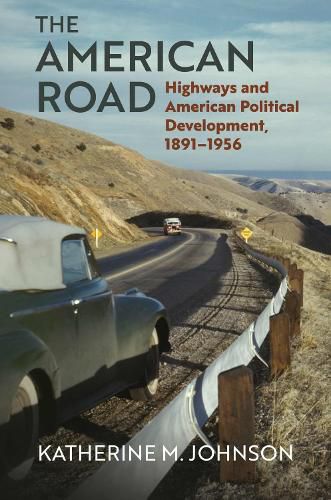The American Road: Highways and American Political Development, 1891-1956
Katherine M. Johnson

The American Road: Highways and American Political Development, 1891-1956
Katherine M. Johnson
In The American Road Katherine M. Johnson develops a bold new theory for how the American highway system has taken on such outsized scale and complexity by emphasizing the emergence of a powerful administrative apparatus in the American federal system. Established in 1914 expressly to intervene in the congressional debates of the era, the American highway bureaucracy consisted of forty-eight state highway officials acting in and through their self-organized association, the American Association of State Highway Officials. Johnson’s central argument is that this new institution occupied a similar position relative to the American state as political parties and courts did. The capacity to organize across a complex constitutional order enabled it to control the purpose and allocation of federal highway aid for the better part of the twentieth century. Johnson investigates this new conception of the American highway bureaucracy, showing specifically where and how that extraconstitutional authority emerged, expanded, and manifested itself in the legislative history, physical dimensions, and geographical reach of the emerging highway system.
The American Road reveals that all of the major highway legislation approved by Congress from 1916 to 1941 was collectively developed and advanced by state and federal highway bureaucrats drawing on the new authority conferred by the system of federal grants-in-aid, which required state legislatures to provide a state matching grant and local governments to relinquish control over decisions of location and design. The capacity to advance their policy aims as both the advice of experts and the will of the states not only secured the new highway program against renewed opposition in Congress in the 1920s but also won the strong support of the motor vehicle industry and set the stage for even more impressive policy gains of the 1930s when highways became the largest category of federal emergency public works. That collective authority, however, required a high threshold of consensus to secure and maintain, producing not just a narrow one-size-fits-all approach to technical issues but also a striking incapacity to respond to changing conditions. Johnson completes her compelling narrative by identifying the source of the interstate highway plan, first proposed in 1939 and finally funded in 1956, in the internal dynamics of and external threats to that extraconstitutional authority.
This item is not currently in-stock. It can be ordered online and is expected to ship in approx 4 weeks
Our stock data is updated periodically, and availability may change throughout the day for in-demand items. Please call the relevant shop for the most current stock information. Prices are subject to change without notice.
Sign in or become a Readings Member to add this title to a wishlist.

